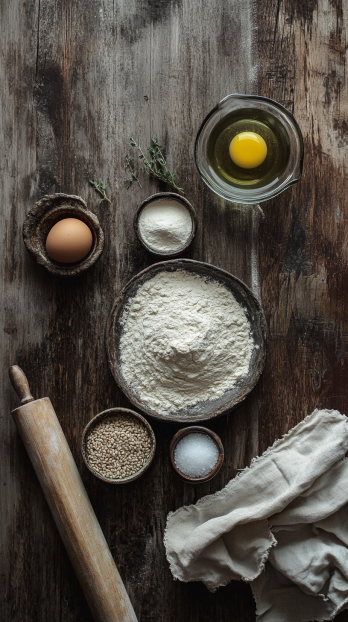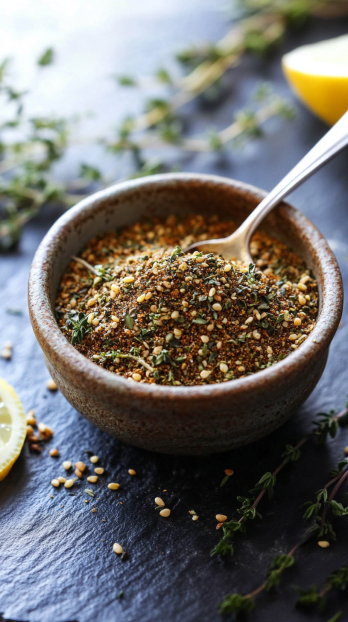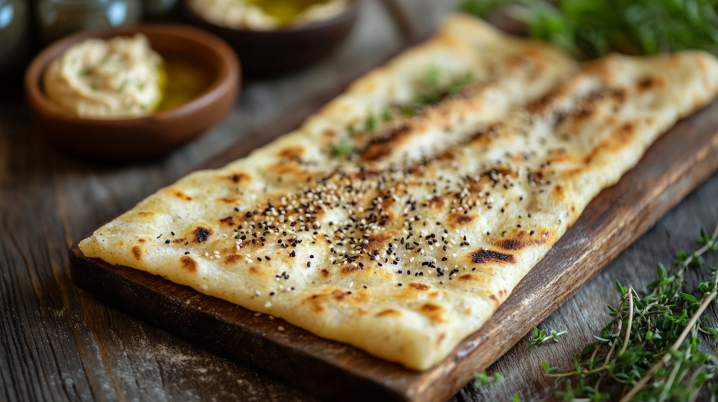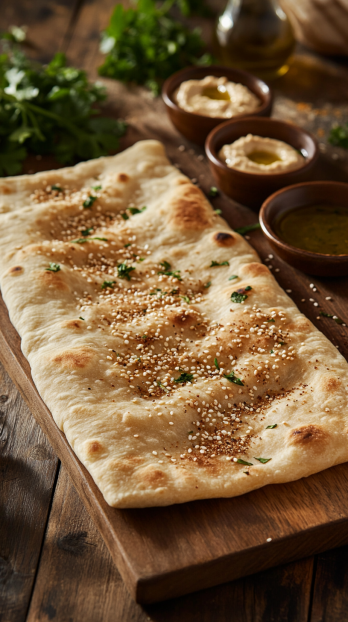The Homemade Secret to the Ideal Lavash Bread Recipe (Armenian Flat Bread)
Light, thin, and adaptable, lavash bread has been a staple on many tables, combining tradition and versatility.
But, how can one become proficient at making freshly baked bread that can be used as a snack or to roll into wraps?
To help you add a little bit of Armenia to your kitchen, let’s break down the secret of baking lavash bread at home, step by step.
What Is Special About Lavash Bread?
Lavash bread is distinguished by its adaptability and simplicity.
This flatbread, which comes from Armenia, is renowned for its paper-thin texture and versatility as wraps, crackers, or soft bread for dipping.
Because it doesn’t require yeast, it can be made more quickly than many other breads. Its delicious, healthful flavor isn’t compromised by that rapidity.
Gather Your Ingredients: What You’ll Need

Essentials for Lavash Dough
Each ingredient serves a purpose, so don’t skip or substitute without understanding the role it plays.
- Flour (2½ cups): The foundation. All-purpose works well, but bread flour gives extra elasticity.
- Salt (1 tsp): Enhances flavor. A pinch can change everything.
- Sugar (1 tsp): Just enough to add a subtle balance.
- Water (⅔ cup, lukewarm): Helps bind and activate gluten for stretch.
- Egg White (1): Adds shine and crispiness.
- Butter (2 tbsp, melted): Keeps the bread soft and rich.
- Za’atar or Sesame Seeds (optional, 2 tbsp): A unique twist for added flavor and texture.
Step-by-Step Guide: From Dough to Lavash
1. Mix Your Dough
Start by whisking together your dry ingredients – flour, salt, and sugar. Slowly add water and melted butter. Stir until a rough dough forms. Knead it with love for about 5 minutes, watching it turn smooth.
2. Let It Rest
Shape the dough into balls, cover with a damp cloth, and rest for 30 minutes. This step makes rolling easier later.
3. Preheat Your Oven
Get the oven ready at 400°F (200°C). Line a baking sheet with parchment paper.
4. Roll It Thin
Roll each dough ball into thin circles, almost transparent. Thinness is key – don’t rush this part.
5. Bake to Perfection
Brush the surface with egg white, sprinkle za’atar or sesame seeds, and bake for 8-10 minutes. Keep a close eye to avoid over-browning.
6. Cool and Serve
Let the lavash cool on a wire rack before serving. Enjoy it warm or store for later.
What Is Za’atar?

Za’atar is a Middle Eastern spice blend made from thyme, oregano, sumac, and sesame seeds.
Some variations include marjoram or salt. It’s tangy, earthy, and nutty, with a bright flavor from the sumac.
Commonly used as a topping for bread, a seasoning for meats, or mixed with olive oil for dipping, za’atar is versatile and adds depth to simple dishes. It pairs perfectly with lavash, enhancing its flavor without overpowering it.
A Twist That Stands Out: Why Za’atar?
Adding za’atar brings a tangy, herbal flavor that pairs beautifully with Middle Eastern dishes.
This subtle yet powerful addition elevates the bread, making it a standout even among traditional recipes.
Lavash Bread Recipe
Print
Lavash Bread Recipe with Za’atar Twist
- Prep Time: 40 minutes
- Cook Time: 10 minutes
- Total Time: 50 minutes
- Yield: 10 pieces 1x
- Category: Vegetarian
- Method: Baking
- Cuisine: Middle Eastern
- Diet: Vegetarian
Description
Lavash bread is a traditional Armenian flatbread that’s soft, thin, and versatile. Perfect for wraps, dips, or enjoying on its own, this recipe adds a unique za’atar twist for a fragrant and flavorful finish. Made with a simple dough and baked to golden perfection, this lavash is easy to make and brings authentic flavors to your table.
Equipment:
Ingredients
- 2 1/2 cups (315g) all-purpose flour
- 1 teaspoon salt
- 1 teaspoon sugar
- 2/3 cup (160ml) lukewarm water
- 1 egg white, lightly beaten
- 2 tablespoons (30g) melted butter
- 2 tablespoons za’atar (optional)
- 1 tablespoon sesame seeds (optional)
Instructions
- Prepare the Dough:
In a large mixing bowl, whisk together the flour, salt, and sugar. Gradually add the lukewarm water and melted butter, stirring until the dough begins to come together. - Knead and Rest:
Transfer the dough to a floured surface and knead for about 5 minutes until it’s smooth and elastic. Divide into 10 equal portions, shape into balls, and cover with a damp cloth. Let the dough rest for 30 minutes. - Preheat the Oven:
Preheat your oven to 400°F (200°C). Line baking sheets with parchment paper. - Roll Out the Dough:
On a lightly floured surface, roll each dough ball into a thin circle, about 12 inches in diameter. Aim for a paper-thin consistency for the best texture. - Add Toppings:
Place the rolled dough on the prepared baking sheets. Brush each piece lightly with the beaten egg white. Sprinkle za’atar and sesame seeds evenly over the top for added flavor and texture. - Bake:
Bake for 8-10 minutes, or until the edges are lightly golden. Keep an eye on them to prevent over-browning. - Cool and Serve:
Remove the lavash from the oven and transfer to a wire rack to cool. Serve warm or at room temperature.
Notes
- Adding za’atar to the lavash elevates its flavor profile, giving it a zesty and aromatic touch that sets it apart from traditional recipes. This simple addition enhances the bread’s versatility, making it perfect for pairing with Middle Eastern dips like hummus or baba ghanoush.
- Storage: Store lavash in an airtight container at room temperature for up to 3 days or freeze for longer storage.
- Alternative Toppings: Swap za’atar for dried herbs like thyme or oregano, or leave the topping off for a plain version.
Nutrition
- Serving Size: 1 piece
- Calories: ~120
- Fat: 2g
- Carbohydrates: 20g
- Fiber: 1g
- Protein: 3g
Nutrition Breakdown
- Calories per piece: ~120
- Protein: 3g
- Carbohydrates: 20g
- Fat: 2g
- Fiber: 1g
Ingredient Alternatives
- No Za’atar? Use a blend of dried thyme, oregano, and a touch of lemon zest to mimic its tangy, herbal notes. For a spicier twist, try chili flakes mixed with sesame seeds.
- No Butter? Olive oil works seamlessly as a vegan alternative, adding a slightly fruity flavor. Coconut oil is another option, though it may add a mild sweetness.
- Gluten-Free Option: Swap regular flour with a gluten-free all-purpose mix. To enhance elasticity, add 1 teaspoon of xanthan gum if it’s not already in the blend.
- No Sesame Seeds? Poppy seeds or flaxseeds offer a similar crunch and nutty flavor. They can also add a visually appealing touch to the bread.
- Low-Sodium Option: Skip the salt and sprinkle a small amount of garlic powder or onion powder in the dough for extra flavor without added sodium.
Serving Suggestions

Lavash isn’t just bread – it’s a blank slate. Use it for:
- Wraps filled with grilled veggies and hummus.
- Crispy crackers for charcuterie boards.
- A soft, pillowy base for flatbread pizzas.
FAQs: All Your Lavash Bread Recipe Questions Answered
Yes, you can cook it on a skillet. Heat on medium, flipping until golden.
Traditionally, no. But you can make it gluten-free using alternative flours.
Store in an airtight container for 2-3 days or freeze for months.
Absolutely! Try poppy seeds, garlic powder, or even a sprinkle of chili flakes.
Hummus, baba ghanoush, kebabs, and even soups.
Ensure the dough isn’t too dry and avoid over-baking.
Yes, though modern variations sometimes include yeast for fluffiness.
The Final Bite
Mastering lavash bread at home is simpler than it seems, and with the addition of za’atar, you’re bringing a burst of flavor to every bite. Whether you’re serving it with your favorite dips or crafting the perfect wrap, this recipe guarantees a satisfying experience that blends tradition with creativity.
For more mouthwatering recipes and tips like this, don’t forget to check out Simply Delicious Digest. From bread to hearty mains and irresistible desserts, we’re here to inspire your next culinary adventure. Let’s make every meal simply delicious!
Disclosure: This article uses automation for structure, but all insights and advice are provided by Ryan Yates, an experienced executive chef with over 20 years of expertise. Additionally, this post may contain affiliate links, which means we may earn a small commission if you purchase through them, at no extra cost to you. This helps support our work and allows us to keep providing high-quality content.


